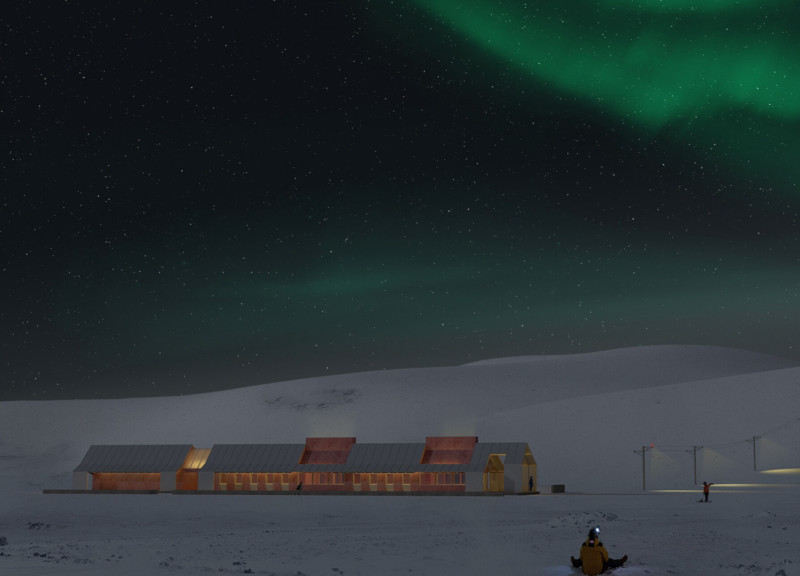5 key facts about this project
The primary function of the architectural design is to facilitate [insert specific function, such as residential living, commercial activities, or community gathering], and it does so with a clear intention to promote interaction and engagement. The layout is crafted to encourage movement through various spaces, with a focus on creating connections—both visually and physically—between different areas within the structure and the external environment.
Key elements of the project include a carefully considered spatial organization that utilizes an open-plan layout. This approach not only fosters a sense of community among users but also maximizes natural light and ventilation, contributing to an overall sense of well-being. The incorporation of large windows and strategically placed openings allows for a seamless flow between indoor and outdoor experiences. Views of the natural surroundings are preserved and enhanced, creating a sense of place within the design.
The materiality of the project is particularly noteworthy, drawing from local resources to reflect and celebrate the regional context. The use of materials such as concrete instills a sense of permanence and stability, while glass elements introduce transparency and fluidity, blurring the lines between interior and exterior. Wood is used to bring warmth to the design, softening the overall aesthetic and providing a tactile quality that enhances the user experience. Steel may be integrated as structural support, contributing a modern edge to the material palette, while brick, if present, offers a historical nod that grounds the building within its community context. Each material has been selected not only for its functional properties but also for its ability to contribute to the narrative of the architecture.
Among the unique design approaches featured in this project is the integration of sustainable practices. Innovative strategies may include the implementation of passive design techniques that optimize energy efficiency, such as maximizing natural light and improving thermal performance. These considerations ensure that the building minimizes its environmental impact while providing comfort to its occupants. Furthermore, the design may incorporate green roofs or walls, rainwater harvesting systems, and other eco-friendly technologies that align with contemporary architectural ideas aimed at fostering sustainability.
Another distinctive aspect of the project is its responsiveness to the local cultural context. The design acknowledges and honors the historical and social fabric of the area, potentially incorporating local motifs or construction techniques that resonate with the community. This approach not only elevates the project's relevance but also fosters a sense of ownership among local residents.
In summary, this architectural project encapsulates a meticulous balance of functional requirements and aesthetic considerations, resulting in a design that is both practical and engaging. It serves as a testament to how thoughtful architecture can enhance the user experience while respecting its environment. To further appreciate the nuances of this architectural endeavor, the reader is encouraged to explore the detailed architectural plans, sections, and designs that illustrate the complexity of this project. By delving into the architectural ideas presented, one can gain a deeper understanding of the intentions behind this thoughtfully composed space.


























